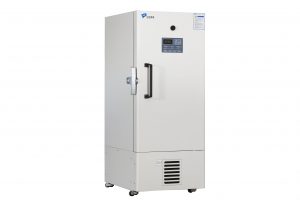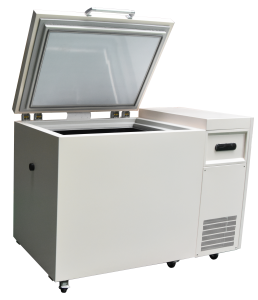A medical refrigerator, known as ultra-low temperature medical freezer or refrigerator as well, is a type of medical refrigerators in the medical industry. Although a medical freezer looks like a regular freezer or refrigerator in terms of their overall shape, actually they are completely different products in many aspects.
What are Types of Refrigerators?

There are three main types of refrigerators, including household refrigerators, commercial refrigerators and medical refrigerators. Among them, medical refrigerators can be further classified into medical medicine refrigerators, medical blood refrigerators and other refrigerators. They are designed based on different standards. For example, medical refrigerators requires a higher temperature control accuracy, smaller temperature fluctuation and better temperature uniformity. But regular refrigerators have less requirements.
Medical Refrigerators VS. Regular Refrigerators

Medical refrigerators is one of the most commonly used equipment in the medical institutions. Its choosing is significantly related to the safety and potency of medicines, vaccines or blood. Medical samples, reagents, vaccines, and blood can be destroyed and loss their high value if stored in household refrigerators or commercial refrigerators. Furthermore, medical institutions will use medical medicine refrigerators, medical blood refrigerators according to different purposes. It’s exactly the main difference between the medical refrigerators and regular refrigerators. It means that regular refrigerators can’t replace medical refrigerators at all.
Other differences between them can be concluded as follows:
- They are used for storing different items. The regular refrigerators generally store fruit, vegetable, beverages, meat and other food, while medical refrigerators generally store drugs, reagents, vaccines, blood, biological samples and other medical items.
- They have different temperature control range. For regular refrigerators, the temperature in the refrigerating chamber is from 0℃ to 10℃ and the temperature may easily fluctuates, which risks icing and frosting in the chamber. But for medical refrigerators, the temperature in the medical medicine refrigerator is from 2℃ to 8℃ with a small temperature fluctuation, and the setting temperature of medical blood refrigerators is 4℃ known as biological zero.
- They have different number of sensors. The regular refrigerators generally have a sensor, so the temperature during the starting state of the compressor differs greatly from that during the down state. Its temperature fluctuates greatly. However, the medical refrigerators generally have two or more sensors, such as ambient temperature sensor, temperature control or alarm sensor, condenser temperature sensor and other sensors. The temperature sensors, electronic thermostat and microcomputer controller can ensure the temperature accuracy in the refrigerators.
- They have different types of compressors. The regular refrigerators adopt the low back pressure compressor with lower cost. Its refrigeration evaporates instantly and the temperature drops rapidly, which can easily freeze items stored in the refrigerators. The medical refrigerators usually adopt the high back pressure compressor with higher cost, which can make temperature drops smoothly and reduce the temperature fluctuation.
- They have different alarm functions. The regular refrigerators don’t have alarm functions except for some high-end household refrigerators. But the medical refrigerators possess a perfect and comprehensive alarm functions, such as high and low temperature alarm, temperature thermostat fault alarm, power-off alarm, abnormal opening and closing alarm and other alarm functions. There are two alarm methods, which are buzzing sound and flashing light.
